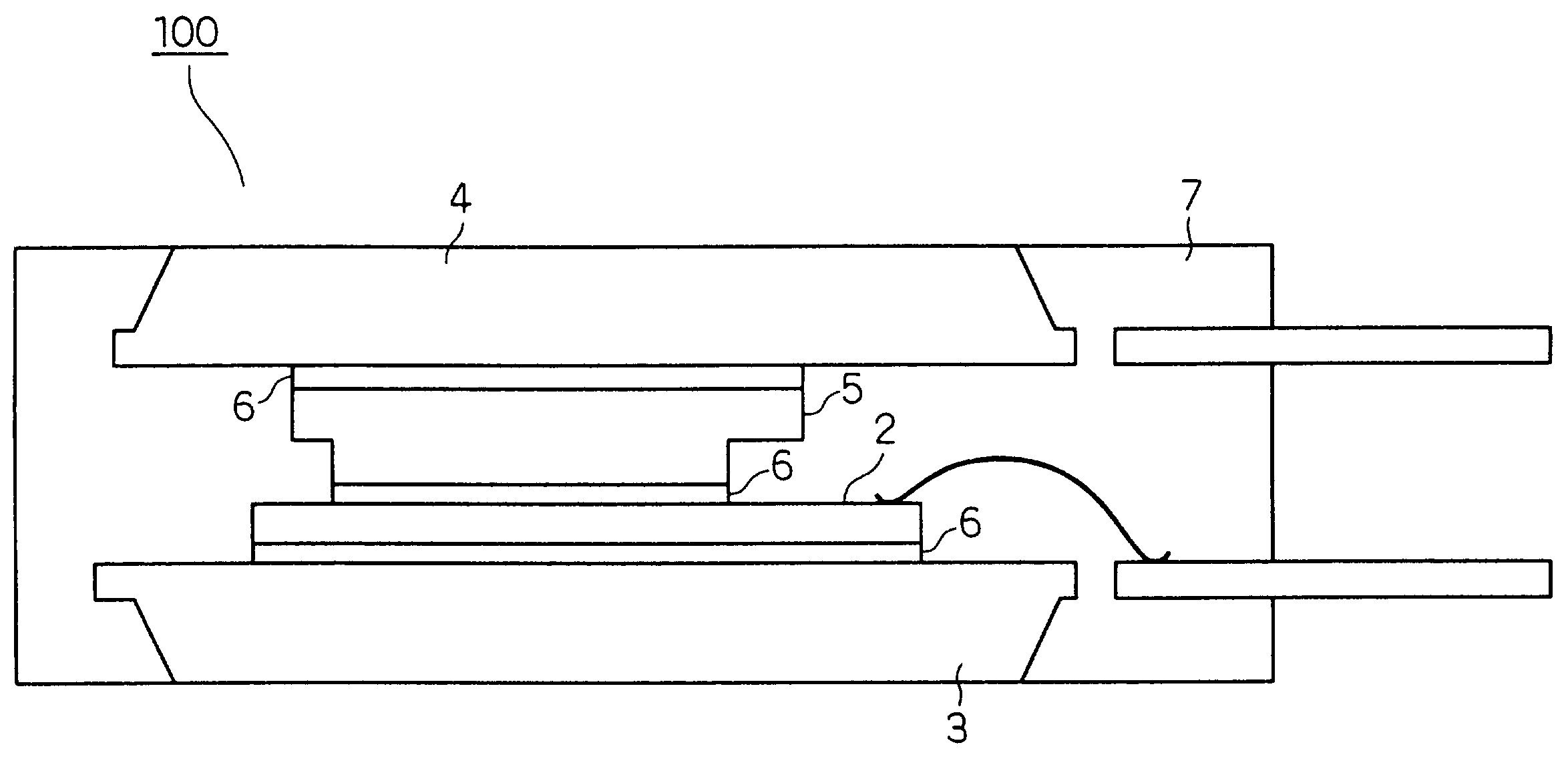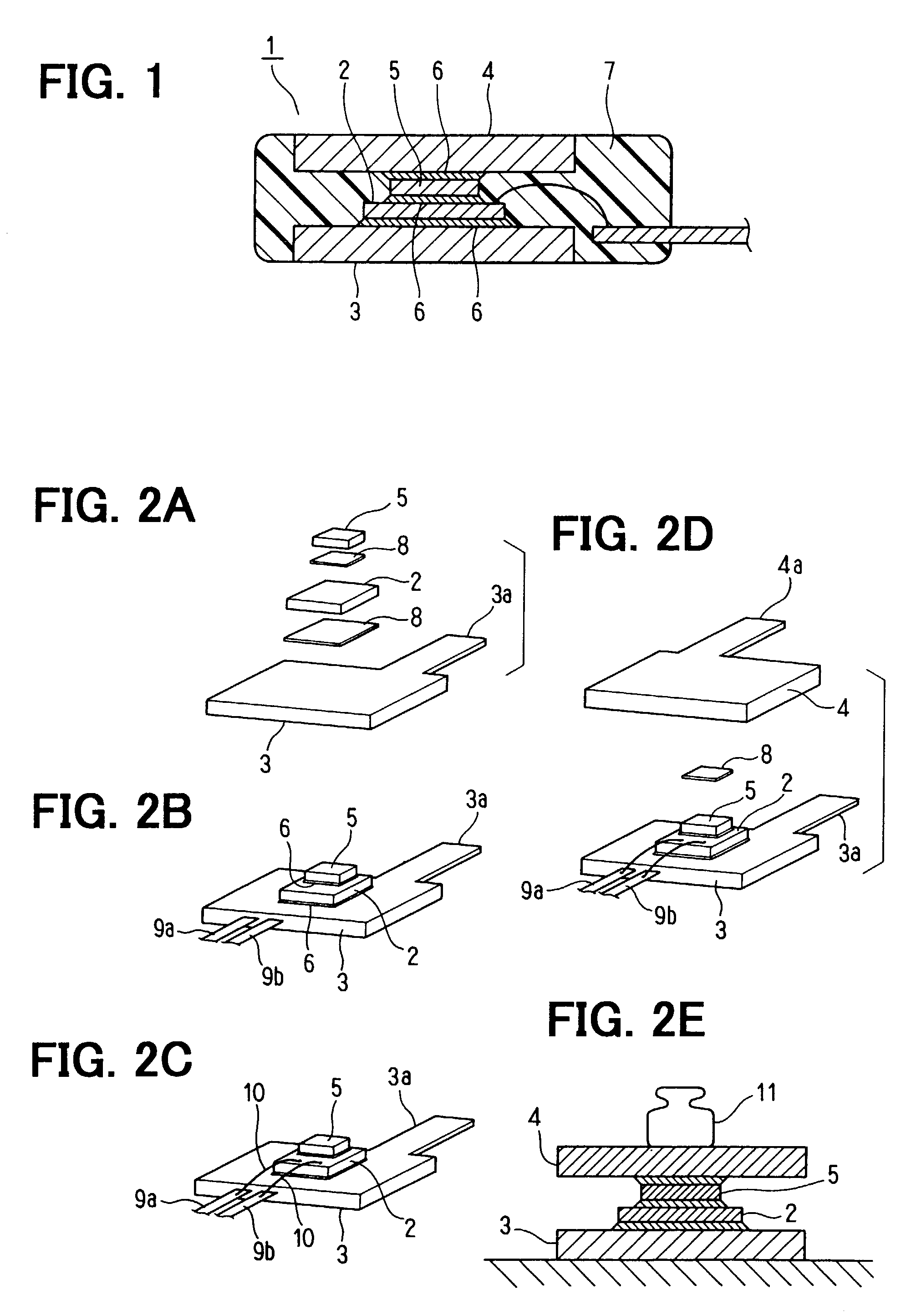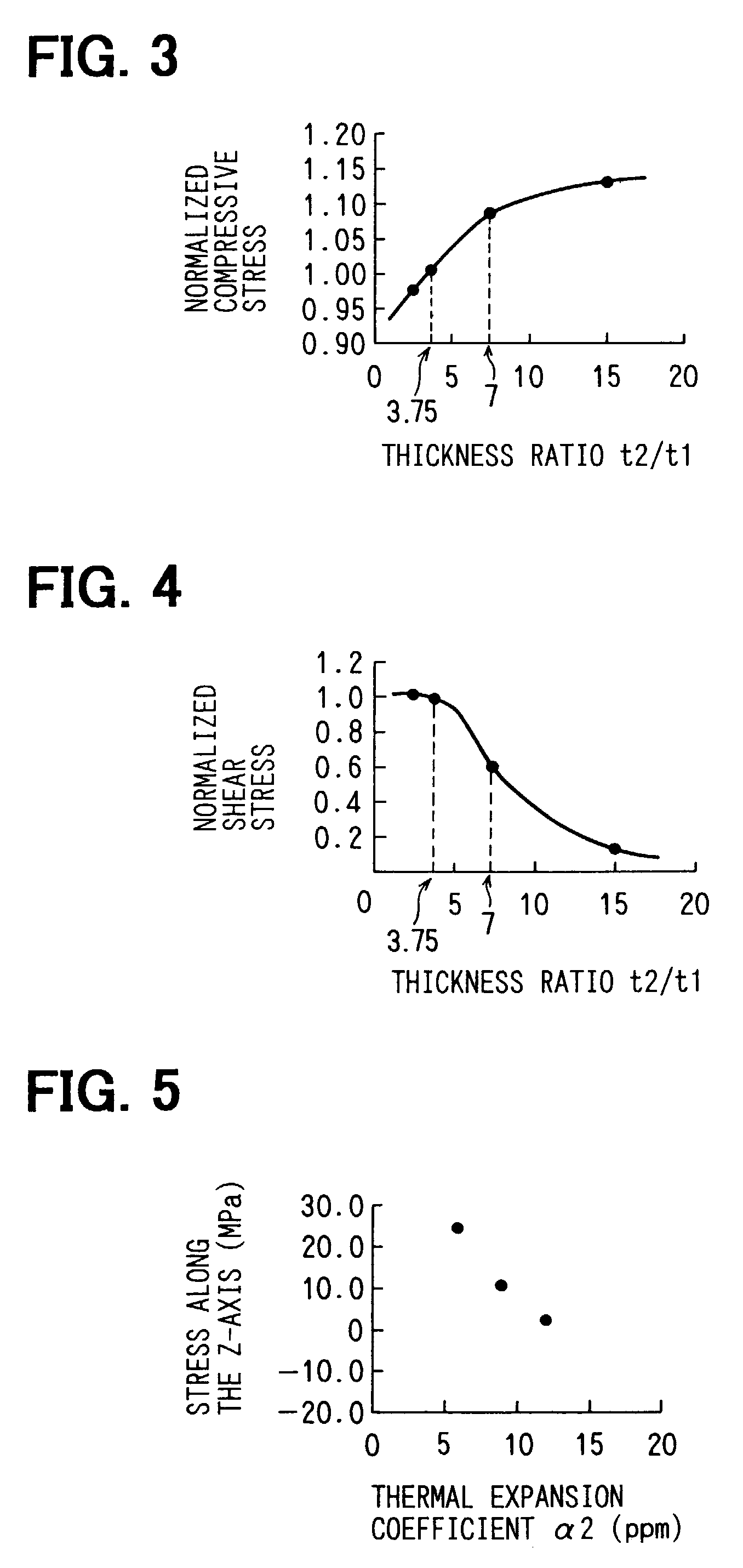Transfer-molded power device and method for manufacturing transfer-molded power device
a technology of power devices and molded parts, which is applied in the direction of semiconductor devices, semiconductor device details, electrical equipment, etc., can solve the problems of increasing the risk of solder breaking, increasing the risk of forming a sleeve, and reducing the service life of the power device, so as to prevent the solder from breaking, improve the manufacturing process of the semiconductor device, and ensure the long-term reliability of the semiconductor devi
- Summary
- Abstract
- Description
- Claims
- Application Information
AI Technical Summary
Benefits of technology
Problems solved by technology
Method used
Image
Examples
first embodiment
[0053
[0054]As shown in FIG. 1, a semiconductor device 1 according to the first embodiment has a similar configuration to the proposed semiconductor device 1A in FIG. 29. The semiconductor device 1 includes a semiconductor chip 2, a lower heat sink 3 (first metal plate), an upper heat sink 4 (second metal plate), and a bridging chip 5 (third metal plate). As viewed in FIG. 1, a lower surface (first surface) of the semiconductor chip 2 and an upper surface of the lower heat sink 3 are joined by a solder 6 (bonding layer). Furthermore, an upper surface (second surface) of the semiconductor chip 2 and a lower surface of the bridging chip 5 are also joined by another solder 6. An upper surface of the bridging chip 5 and a lower surface of the upper heat sink 4 are also joined by other solder 6. The semiconductor chip 2 in FIG. 1 releases heat from both sides of the semiconductor chip 2 through the heat sinks 3, 4.
[0055]The semiconductor chip 2 in FIG. 1 is a vertical power MOS transistor...
second embodiment
[0075
[0076]In the semiconductor device 1, which is shown in FIG. 1, according to the second embodiment, the thermal expansion coefficient α1 of the heat sinks 3, 4 and the thermal expansion coefficient α2 of the resin 7 are set to satisfy the following equation.
0.5≦α2 / α1≦1.5
[0077]By setting the thermal expansion coefficients α1 and α2 this way, it is possible to balance the tensile stress in the semiconductor chip 2 and the shear stress at the surface of the semiconductor chip 2, as described below.
[0078]As shown in FIGS. 5 and 33, the tensile stress in the semiconductor chip 2 at an end of the chip 2 decreases as the coefficient α2 of the resin 7 is increased. The tensile stress is the stress along the Z-axis, which is in the vertical direction of FIG. 1, and has been calculated by simulation for various semiconductor devices 1 having a different thermal expansion coefficient α2 for the resin 7. In the graph in FIGS. 5 and 33, the X-axis represents the thermal expansion coefficient...
third embodiment
[0085
[0086]In the semiconductor device 1 in FIG. 1, according to the third embodiment of the present invention, the surface roughness Ra of the lower surface of the semiconductor chip 2, which faces the lower heat sink 3 satisfies the following equation.
Ra≦500 nm
[0087]As shown in FIG. 8, if the roughness Ra is equal to 500 nm or smaller, it is possible to prevent the semiconductor chip 2 from cracking under a relatively large thermal stress. FIG. 8 shows the percentage of the semiconductor chip 2 that broke when various prototypes of the semiconductor device 1, which have a different surface roughness Ra, are exposed to the thermal stress.
[0088]In the semiconductor device 1 in FIG. 1, the roughness Ra of the lower surface of the semiconductor chip 2 satisfies an equation of Ra≦500 nm, while the condition for the thickness ratio t2 / t1 according to the first embodiment and the condition for the thermal expansion coefficients α1, α2 according to the second embodiment are satisfied. How...
PUM
| Property | Measurement | Unit |
|---|---|---|
| tensile stress | aaaaa | aaaaa |
| compressive stress | aaaaa | aaaaa |
| internal stress | aaaaa | aaaaa |
Abstract
Description
Claims
Application Information
 Login to View More
Login to View More - R&D
- Intellectual Property
- Life Sciences
- Materials
- Tech Scout
- Unparalleled Data Quality
- Higher Quality Content
- 60% Fewer Hallucinations
Browse by: Latest US Patents, China's latest patents, Technical Efficacy Thesaurus, Application Domain, Technology Topic, Popular Technical Reports.
© 2025 PatSnap. All rights reserved.Legal|Privacy policy|Modern Slavery Act Transparency Statement|Sitemap|About US| Contact US: help@patsnap.com



